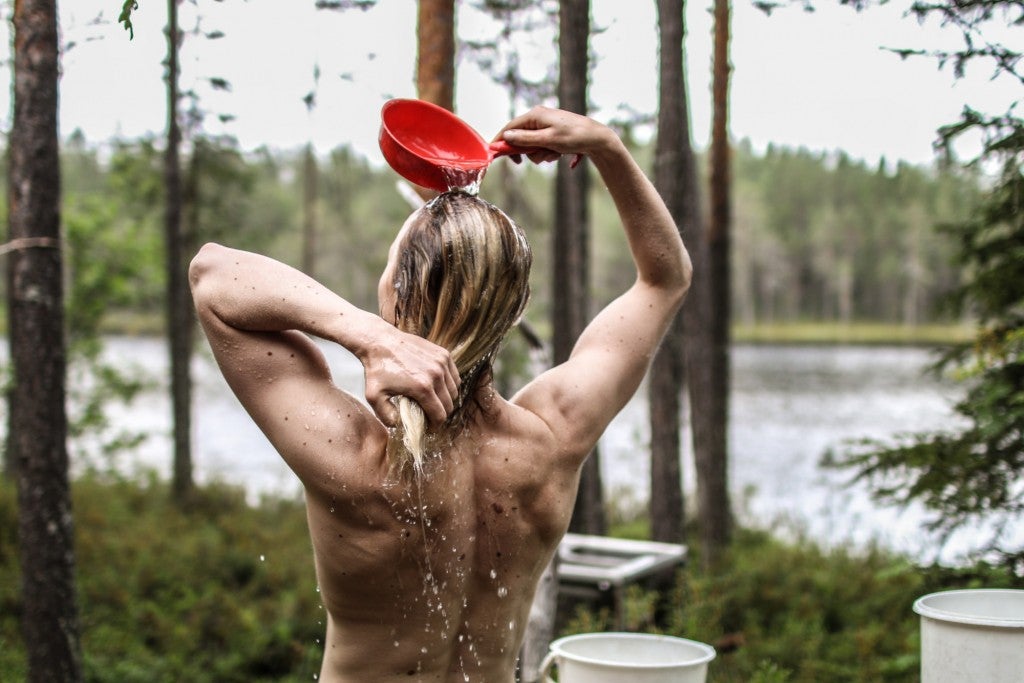Winter camping is some people’s idea of a nightmare—a survival exercise that could only be made tolerable if whiskey weren’t so damn heavy. But therein lies its greatest appeal, because half the reason we love to be outdoors in the first place is because it gets us away from everyone else.
Winter is also one of our favorite times to be in nature. It’s beautiful, of course, with fresh fields of glittering powder, snow-filled pine trees, and impossibly blue skies, and because it requires extra mindfulness, it brings a heightened appreciation for all these things. Having to pay extra attention to your surroundings—reading avalanche terrain, watching weather, and navigating carefully—makes you feel more in tune with them.
So this winter, when the couch is calling, remember that adventure knows no seasons. You are outdoorsy, after all. You hike up mountains, cut your own firewood, and bathe naked in icy streams—what’s a little snow and cold? Here are some tips to winter camp like a boss—and stay warm, safe, and comfortable too.
Avalanche Gear
The mountains may be a winter playground, but there is nothing fun at all about avalanches. If you’re venturing into avalanche terrain, you’ll need to bring avalanche gear—beacon, probe, and shovel—and know how to use it. Be mindful of avalanche paths wherever you travel in winter, even if it’s on a well-worn path. Ensure your camp is safe from any slide path, regardless of how small. If you don’t know, don’t go.
Tent
For starters, you’ll want to bring a four-season tent and a tarp to put under it. Stamp out a platform for it in the snow in a wind-protected spot away from avalanche paths. Be sure to stake it down using special snow stakes or stuff sacks filled with snow and buried, as regular tent stakes will do next to nothing to keep it tethered in wind. Come nighttime, you’ll want to pack your gear (except for sharp things like ice axes and crampons that will rip your tent) around your body to take up air space. Finally, no matter how frigid it is outside, partially unzip a window for ventilation or you will be a wet mess come morning.
Sleeping
With the right gear and know-how, you can actually get a good night’s sleep outside in winter—provided your tent mate doesn’t snore. First, you’ll need an air mattress with an R-value of 4, which is the most insulated pad on the market. We like to bring an extra lightweight closed-foam pad to put underneath the inflatable one, too. They weigh nothing, can double as a snow-bench pad, and also provide a backup in case your air mattress gets punctured. As for a sleeping bag, be aware just because it’s rated to -20 degrees F doesn’t mean it’s comfortable at -20 degrees F. For extra warmth, be sure to eat a proper dinner (your temperature is partially regulated by how many calories you consume before bed), put a Nalgene bottle filled with hot water in your sleeping bag, and make sure you pee when you need to (your body uses less energy to stay warm when your bladder is empty). One other pro tip for backcountry skiers: Sleep with the liners of your ski boots in your bag to dry them out for the next day.
Camp
The camp kitchen is one of our favorite parts about winter camping. With your avalanche shovel, you can dig out benches, tables, cooking platforms, and even a snow sculpture as your centerpiece—why not? We like to bring a lightweight rain fly to stake out above it in case the flakes start flying. Speaking of storms, before leaving camp or going to sleep, stash your gear so you can easily find it if everything gets buried in two feet of fresh powder.
Electronics
When it’s cold, everything that requires batteries dies faster. Bring extra batteries or a power bank for your headlamp, beacon, lantern, or phone. Keep anything important in your sleeping bag at night to help conserve power.
Water
Hydrate or die, as they say (and no, whiskey doesn’t count). Bring insulated water bottles—not a hydration pack—and store them upside down at night. Water freezes from the top down, so if it freezes, you’ll still have some drinkable water when you flip it back over. Be sure you test your snow-melting stove to make sure it’s in working order before you leave, and maybe even bring a backup just in case. Another pro tip: When melting snow, pour a little liquid water in first to avoid a snow-scorch taste.
The great, white winter awaits, so get your gear together and get out there. It’ll be a camping experience you’ll never forget.
The Dyrt is the only camping app with all of the public and private campgrounds, RV parks, and free camping locations in the United States. Download now for iOS and Android.
Popular Articles:
Articles on The Dyrt Magazine may contain links to affiliate websites. The Dyrt receives an affiliate commission for any purchases made by using such links at no additional cost to you the consumer.



